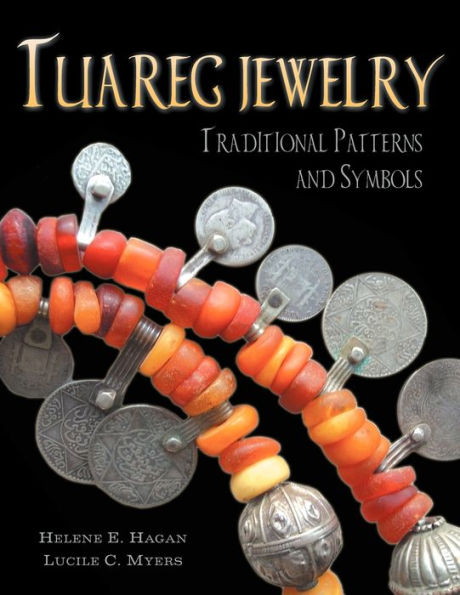"For you, it may look like a small unimportant detail, like your thumbnail. But for me, it is the whole vast world. Look at this jewel... here is the ant, here is the hyena, the jackal, the hoof of a horse, that of a gazelle, the sun, the moon, the stars, the good eye... this triangle, this is woman, and here are the eyebrows of the Malignant One, there, laughter... it is all of our lives in one piece of silver." (Translated from the French by Helene E. Hagan, from original Tuareg words of an artisan cited by J. Gabus, 1971) An extensive study of the symbolism of Tuareg jewelry has not yet been undertaken to date. It is this simple realization that brought the authors together in a decision to collect information on the topic, from past scholarly journals and books, contemporary articles and web sites, but also from Tuareg informants whose expert knowledge was sought. Though this book is small and does not aspire to be all encompassing, it is the first work totally dedicated to the presentation of the elaborate silver jewelry of Tuareg men and women of Northern Niger in the English language, and the only one we know that is solely dedicated to providing information concerning the function, meanings, and symbols of that jewelry. The book introduces the reader to the culture of the Tuaregs, a remarkable group of African nomads of the Sahara Desert, which has fascinated the Europeans who came into contact with them in the nineteenth and twentieth centuries. In the last decade or so, as the Tuareg societies of Niger and Mali underwent major change, a number of American researchers began to document some of their ways. Research and publications in the English language are, however, lagging far behind those in the French language. Fortunately, the primary author of this book, Helene Hagan, was originally educated in the French language, and as an Amazigh (Berber) herself, is very familiar with North African scholarship in the Amazigh culture. Thus, as a bilingual anthropologist of Berber ancestry, born and raised in Morocco, and an activist for Amazigh cultural, linguistic and human rights, she benefits from a fourfold source of valuable information: French scholarship, American contemporary accounts, the latest Amazigh research emanating out of North Africa, and Northern Niger Tuareg informants she knows. This unique set of circumstances gives the book an extra dimension of depth and insight.



